While going through some unprocessed photos taken in August, I came across some images of Beautiful Damoiselles. I took the pictures while on a weekend holiday in Cornwall. Since it’s now September and the insect season will soon come to a close, I thought it would be good to share these images, reflect on them, and also comment on the wonderful Olympus lens that rendered them.
Whenever I visit Cornwall, I make it a priority to spend some time by the River Lynher to photograph the most striking of damselflies… the Beautiful Demoiselle. On previous years, I came armed with a Canon 100-400mm f5.6 mkII. This is a great lens, and I found it almost perfect for capturing these elusive, fairy-like creatures. CLICK HERE for my review of this lens.
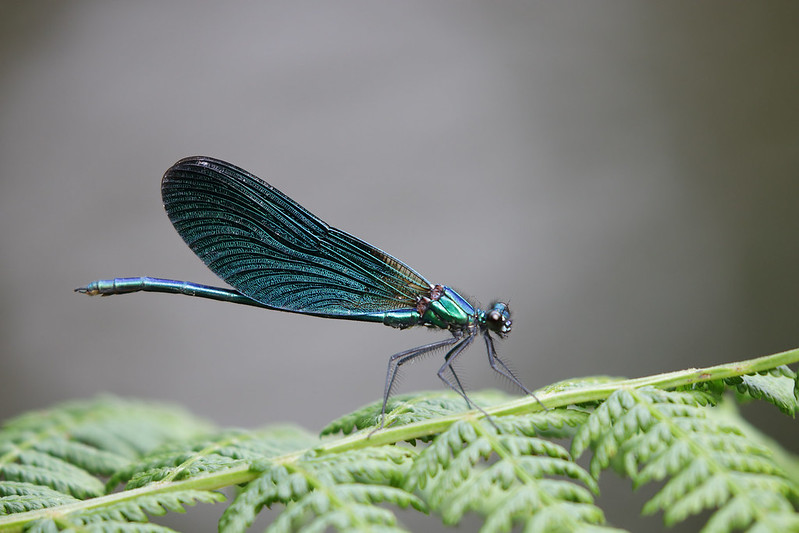
Canon EOS 80D – Canon EF 100-400mm f/4.5-5.6L IS II USM
f/5.6 / 1/100 / 400mm / ISO 400
August 22, 2021 – River Lynher, near Callington, Cornwall
Having changed most of my Canon gear for Olympus, I used the Olympus E-M1X with Olympus 40-150mm f/2.8 + MC-14 teleconverter. The minimum focus distance on the Olympus 40-150mm is 2.3 feet. (0.7m) which gives it a reasonable 1.5 maximum magnification. If you ever need more magnifying power when shooting close to your subject, then the 1.4x teleconverter MC-14 delivers frame-filling magnification of your subjects for even more dramatic close-up photography. It also extends the reach to an equivalent of 420mm with a maximum aperture of f4. A 9-blade rounded diaphragm forms the apertures; the fast aperture, rounded blades, and 420mm equivalent focal length (with MC-14) gives decent bokeh in the out-of-focus areas.
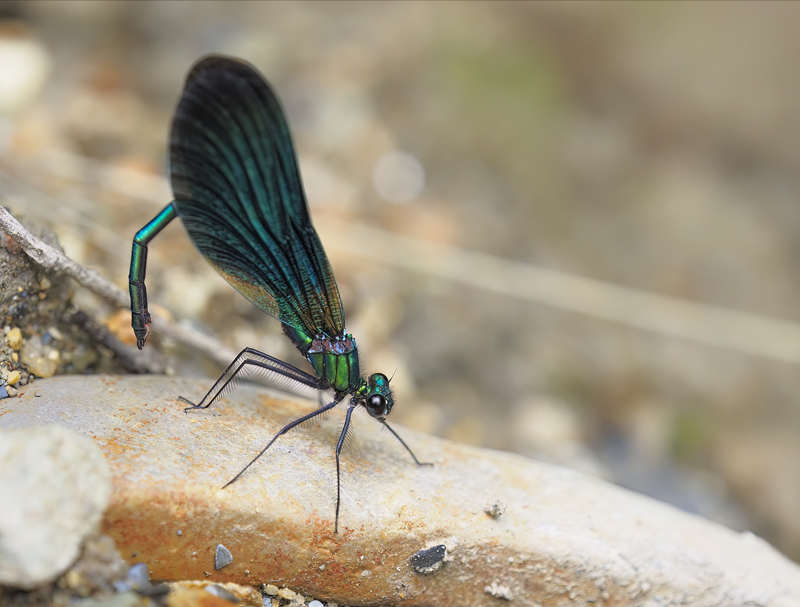
Olympus E-M1X – Olympus 40-150mm f/2.8 + MC-14
f/5.6 / 1/600 / 150mm / ISO 1600
August 20, 2022 – River Lynher, near Callington, Cornwall
I should elaborate further on close focus. If you were to tell me, I would take damselfly shots with this lens, I would have questioned your sanity. But you know what? The lens performed brilliantly. It surprised me I didn’t feel the urge to go for my dedicated macro lens. I’m very pleased with the shots taken on the 40-150mm. No, it’s not a macro lens. But 420mm (equivalent) at 28” (0.7m) is a pretty strong close focus setting. It meant that I didn’t have to pull the 40-150mm off the camera nearly as much as subjects got smaller and closer. Indeed, it was only when I was getting extremely close to small subjects that I even wanted a macro lens. That’s what a good zoom lens should do: stay on the camera as much as possible. You use zooms for some convenience, and anything that lens does to keep you from having to switch to another lens is more convenience. To be fair, the Canon 100-400mm f5.6 mkII also performs admirably in this area. For ultimate magnification, however, the crown must go to the Olympus 100-400mm f5.0-6.3 with MC-1.4. This combination almost approaches the macro 1.1 magnification, giving a whopping x0.8! CLICK HERE to read my post on this combo.
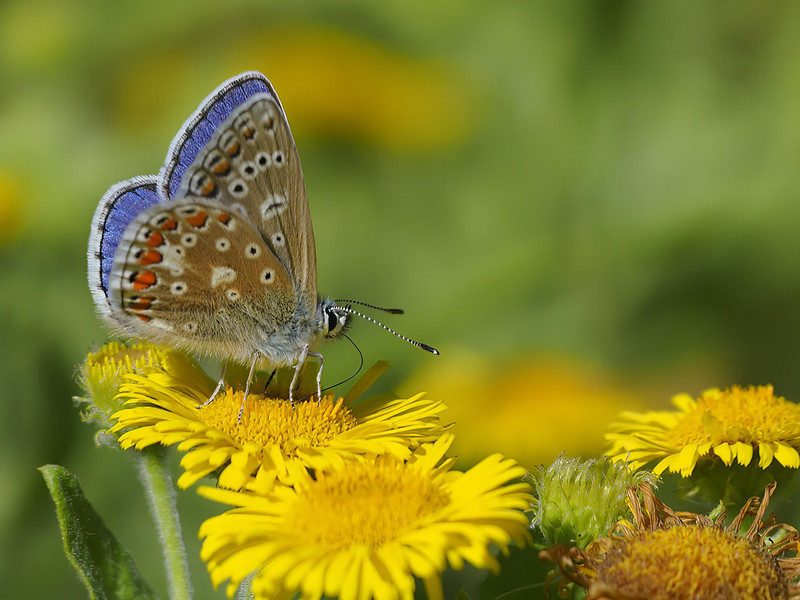
Olympus E-M1X – Olympus 100-400mm f/5.0-6.3 + MC-14
f/11.0 / 1/1200 / 420mm / ISO 1600
August 5, 2022 – Kenfig Nature Reserve
Having photographed damselflies many times before, sneaking up to within 2 feet, without scaring them off, is easily achievable. I’ve grown accustomed to approaching them at a sloth-like pace, stalking from a low angle as opposed to a high one. Their dominant predators are birds, so damselflies are more weary of any movement from above than from below. At minimum focus distance, the Olympus set to 150mm with 1.4 teleconverter, provides slightly more magnification than the Canon at 400mm. Besides, getting closer to insects is always preferable, as long as you avoid scaring them away! A shorter distance increases the resolving qualities of a lens, resulting in sharper and more detailed images. This is one reason macro lenses are often the best option for photographing insects, and particularly for showing the ommatidia (the facets comprising the insect’s compound eyes).

Olympus E-M1 Mark II – Olympus 60mm f/2.8 Macro
f/4.0 / 1/250 / 60mm / ISO 400
July 1, 2022 – Kenfig Nature Reserve
On the whole, I’m very pleased with the Olympus 40-150mm + MC 1.4. It focuses faster than the Canon 100-400mm. This may be because of being a smaller, lighter lens and having less glass to move. The sharpness of this lens is outstanding. I mean, it’s jaw dropping, edge to edge. I have sharp lenses, and I’ve spent a lot of years using Canon’s finest, but I’m going to put my head on the block and say that I think this is up with the best. Adding the teleconverter was another pleasant surprise. There was minimal degradation in sharpness while getting a really nice subject separation at f4, which is the maximum aperture with the teleconverter mounted. Great praise indeed! I still miss not having the Canon 100-400mm lens, but looking at the quality of the images in this post, I think I’ve found a worthy successor in the Olympus 40-150mm. It has become my favourite go-to lens for photographing dragonflies and butterflies.
All pictures below were taken by the river Lynher, Cornwall, on Olympus E-M1X with Olympus 40-150mm f/2.8 + MC-14
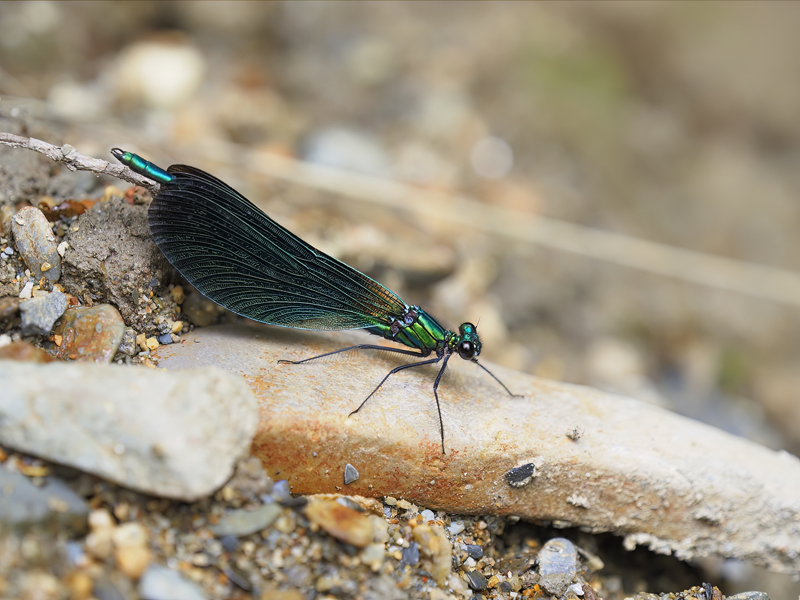
f/4 / 1/640 / 210mm / ISO 800
The sharpness of the lens is outstanding, even with MC-14 teleconverter.
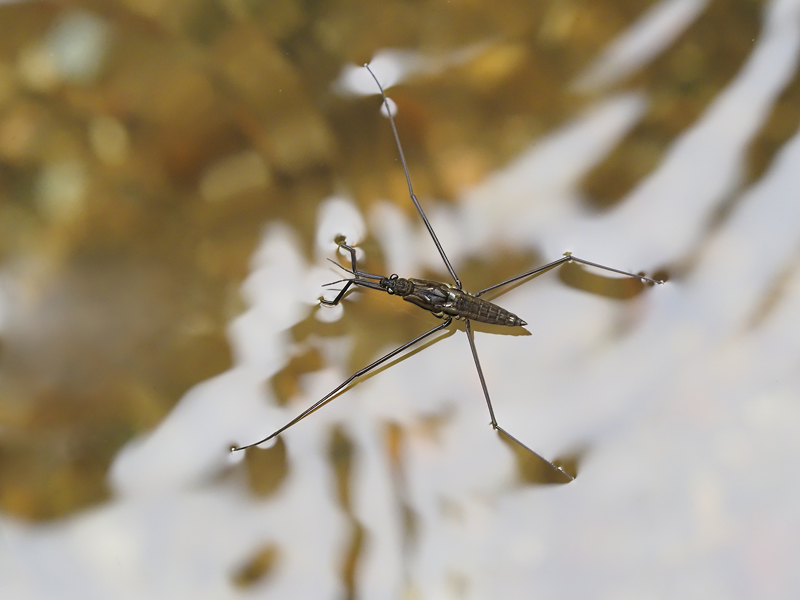
Pond Skater dancing on the water’s delicate, membranous surface.
f/5.6 / 1/200 / 210mm / ISO 1,600
I didn’t have to pull the 40-150mm off the camera nearly as much as subjects got smaller and closer.
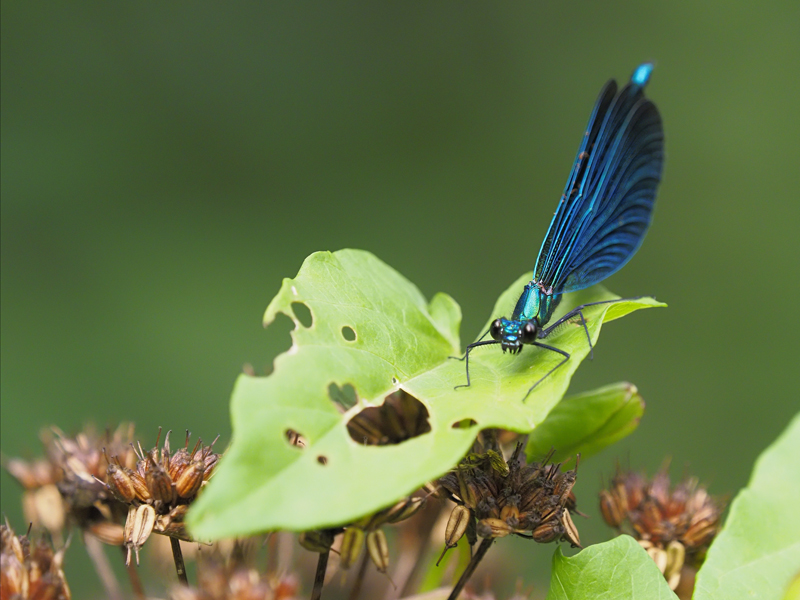
With bulging and large demonic eyes they look more like creatures from some fantasy underworld.
f/4 / 1/2,000 / 210mm / ISO 1,600
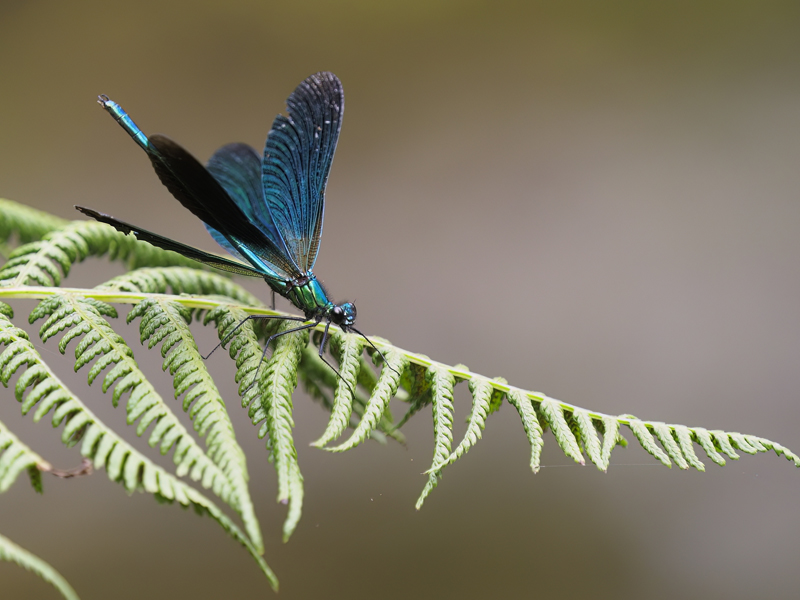
The male will be seen flirting and fluttering his wings as he tries to attract a female with impressive dance moves!
f/4 / 1/500 / 210mm / ISO 800
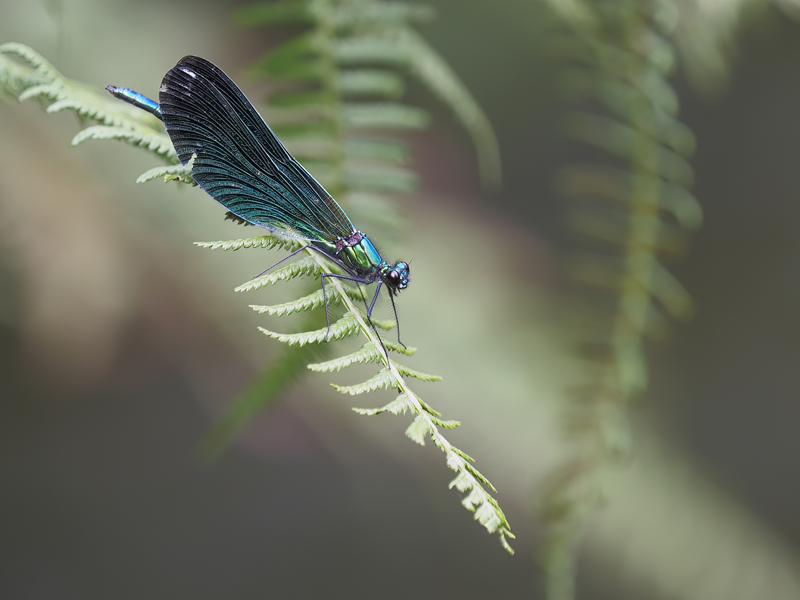
f/4 / 1/500 / 210mm / ISO 800
Balancing precariously on a fern leaf, this male is looking for any prey foolish enough to venture within striking distance.
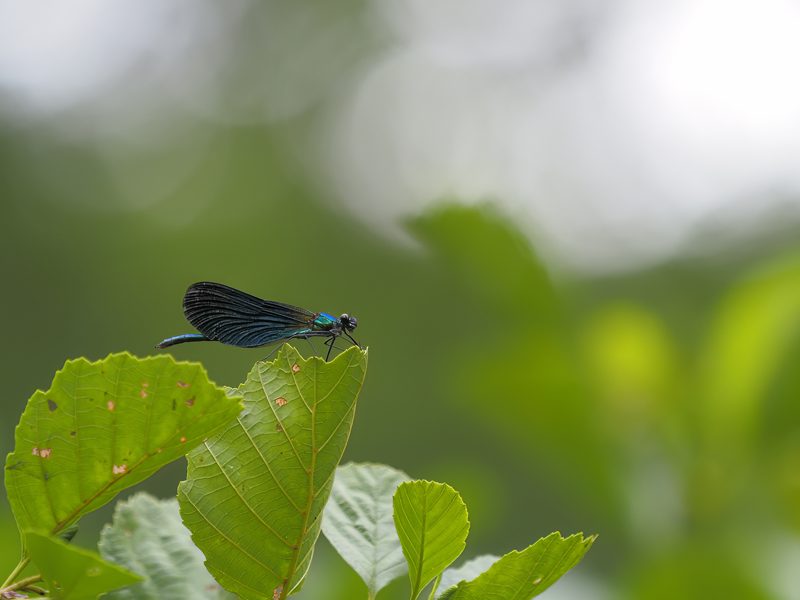
f/4 / 1/500 / 210mm / ISO 800
A 9-blade rounded diaphragm forms the apertures; the fast aperture, rounded blades, and 210mm
(420mm equivalent focal length with MC-14) gives decent bokeh in the out-of-focus areas.
Notice the soft and nicely diffused bokeh.
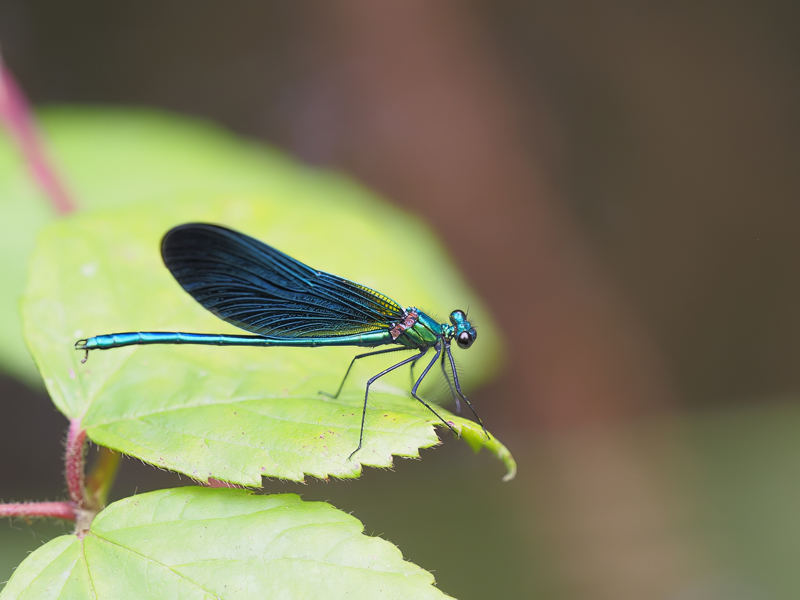
f/4 / 1/125 / 190mm / ISO 800
The Males have dark-coloured wings and metallic blue-green bodies.
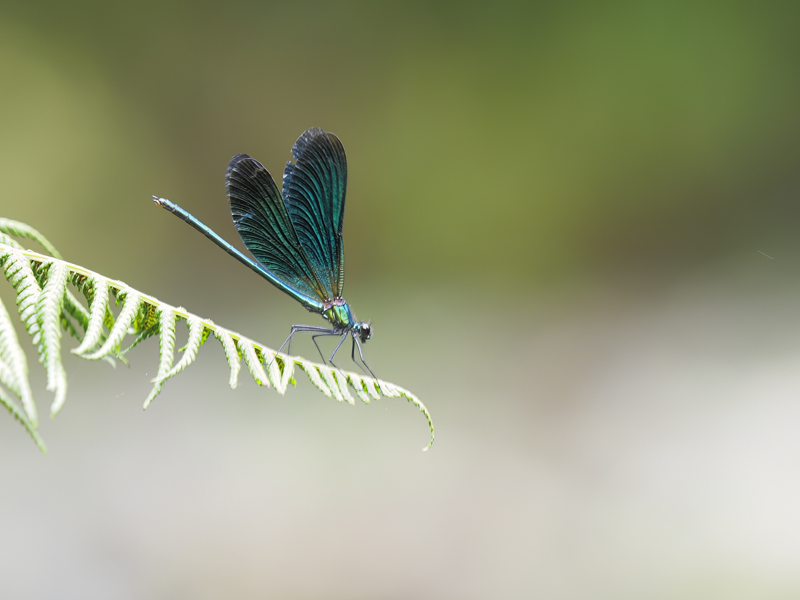
f/4 / 1/125 / 190mm / ISO 800
Raising his abdomen as if ready to pounce, this male is ready for action!
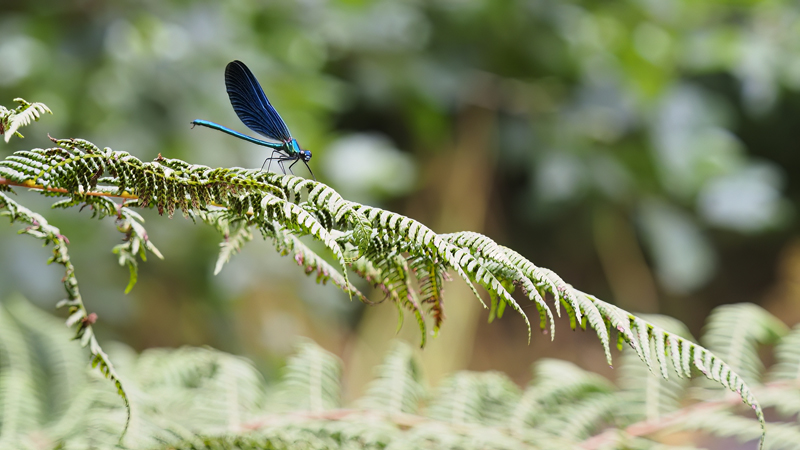
f/4 / 1/200 / 56mm / ISO 800
While not as good as a wide-angle for environmental captures, by zooming out, I could give a hint of a woodland setting.
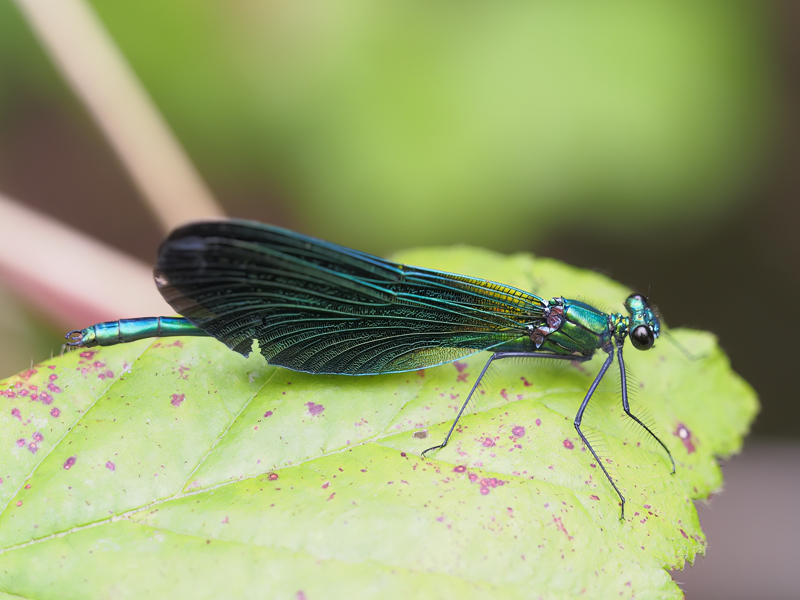
f/4 / 1/200 / 210mm / ISO 800
Beautiful Demoiselle is an appropriate name for such a stunning creature.
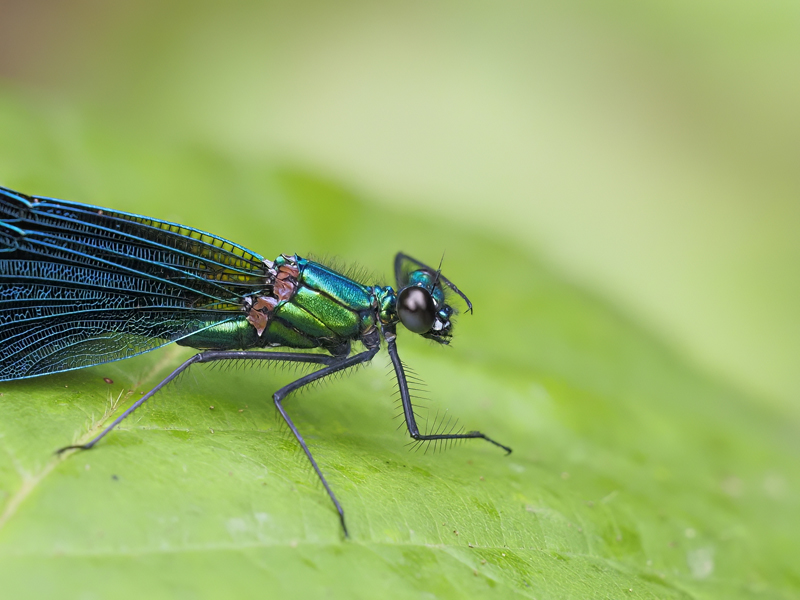
f/5.6 / 1/500 / 210mm / ISO 3,200
I remember years ago, I would set my ISO limit to 800 on my Canon 7D.
In contrast, I can set ISO high as 3,200 on the Olympus E-M1X without worrying about noise ruining the shot.
The detailed shot above was taken at ISO 3,200 and yet there is little noise.
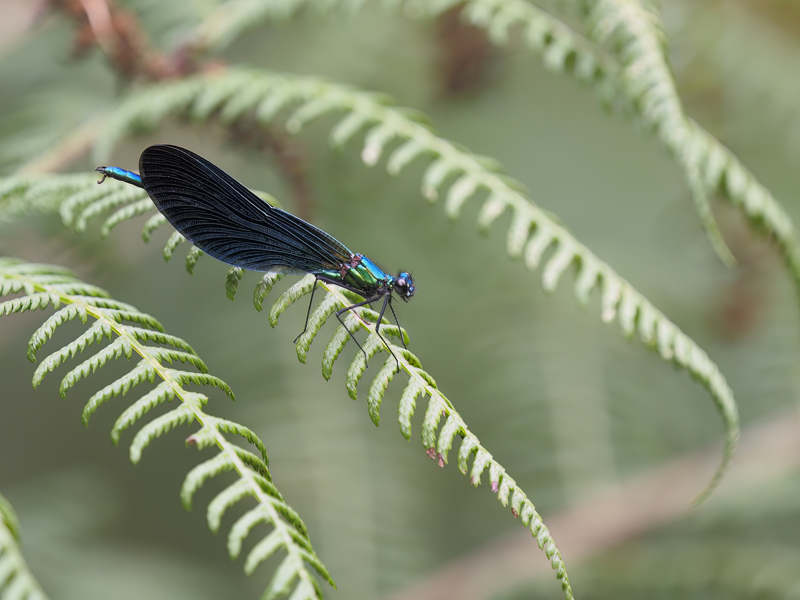
f/4 / 1/250 / 210mm / ISO 800
Best place to look for Beautiful Damselflies is by dangling, riverbank vegetation, such as these cascading fern leaves.
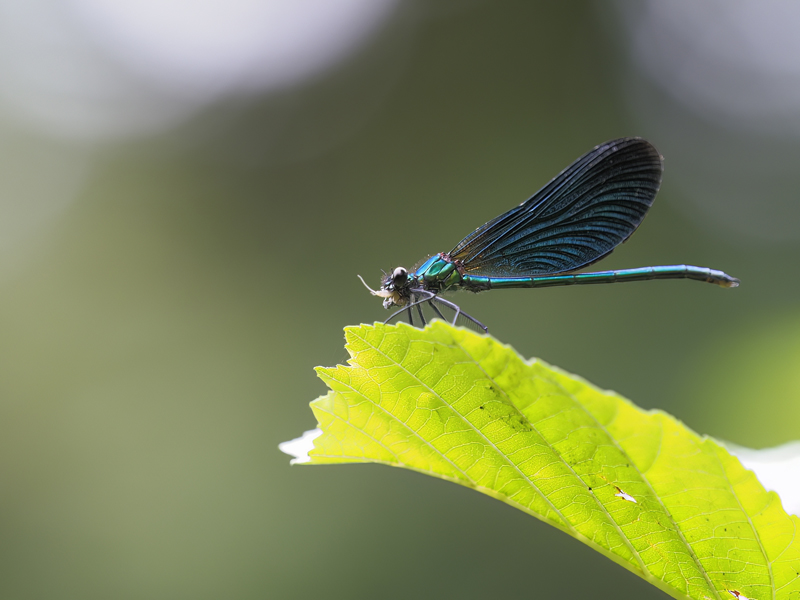
f/4.5 / 1/100 / 210mm / ISO 800
Damselflies are ferocious predators with fierce serrated mandibles that help to chop up their prey.
Looks like this damselfly is munching away an aphid.
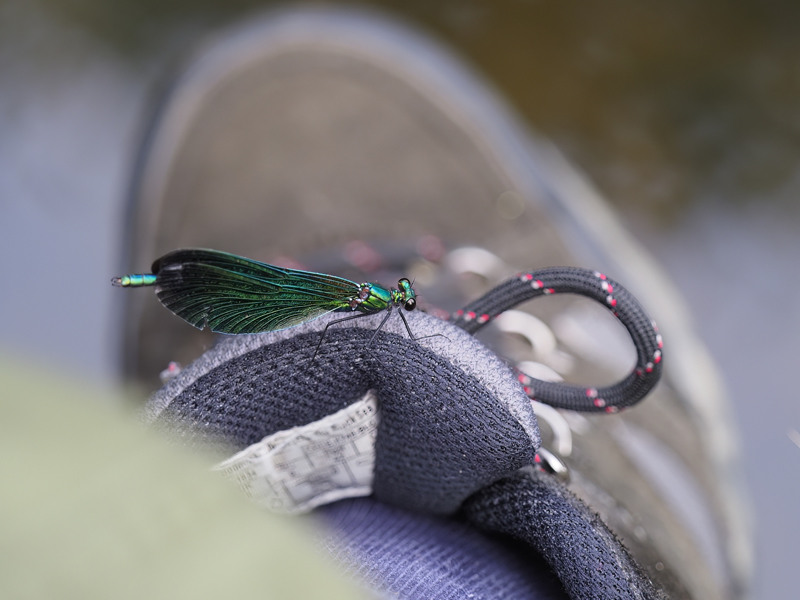
f/4 / 1/500 / 95mm / ISO 800
With my legs overhanging from the bankside it wasn’t long before a Beautiful Demoiselle decided to rest on my boot!
The great thing about a zoom lens is that you can zoom out and show some of the context of the subject.
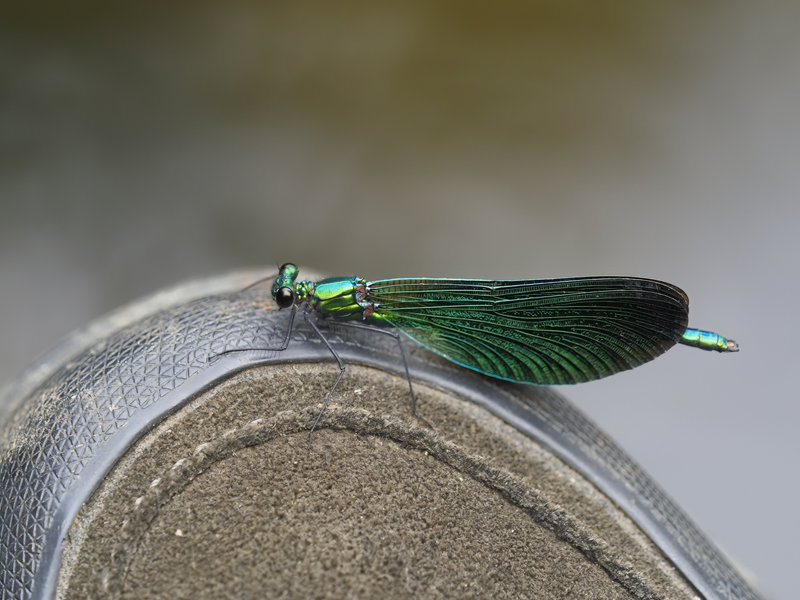
f/4 / 1/320 / 210mm / ISO 800
Zooming to 210mm (420mm equivalent on full frame) I can avoid distractions by showing less of my boot and more of the damselfly.
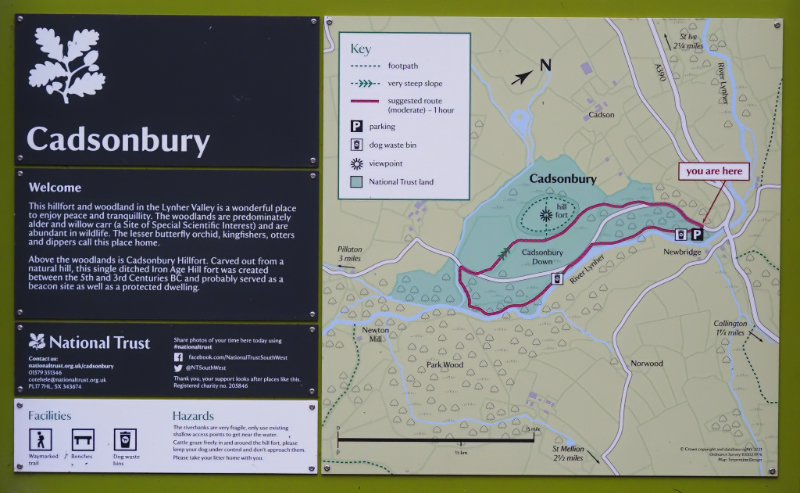
All these Beautiful Demoiselle pictures were captured while on a visit to Cadsonbury, Cornwall.
It’s a great place for wildlife!. The river Lynher is a fast flowing river with sand and gravel bottom.
The river attracts kingfishers, dippers, yellow wagtails. otters, and last but by no means least, the Beautiful Demoiselles.
I hope you enjoyed this post and if you would like to know more about the Beautiful Demoiselle CLICK HEAR.

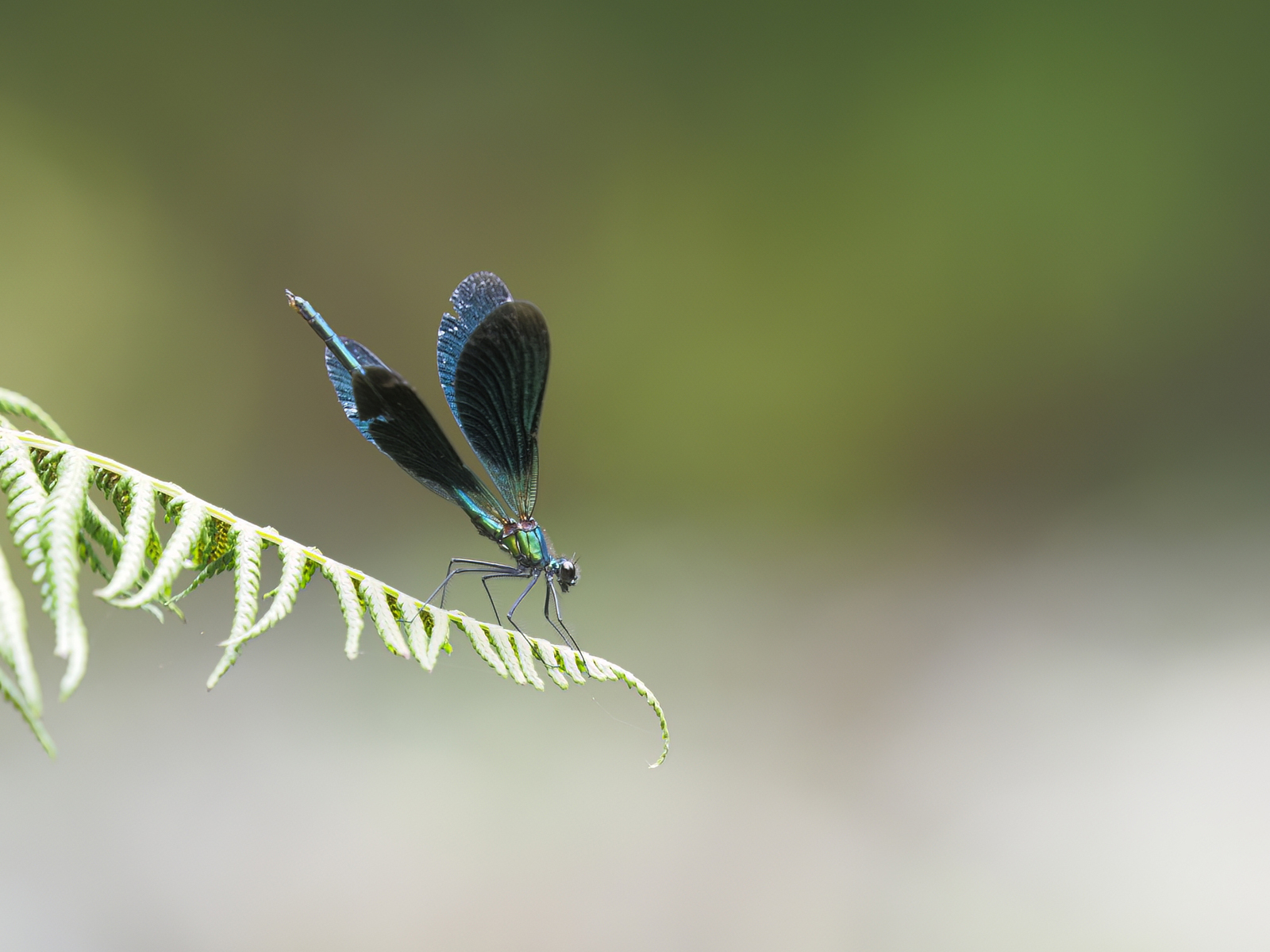
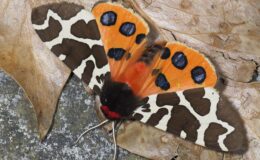

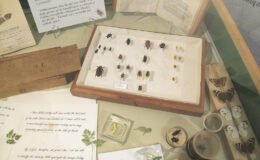
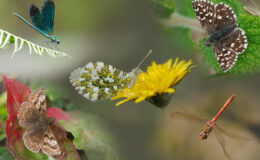
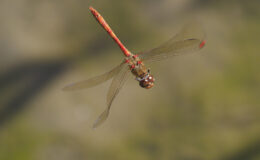
Leave a Comment